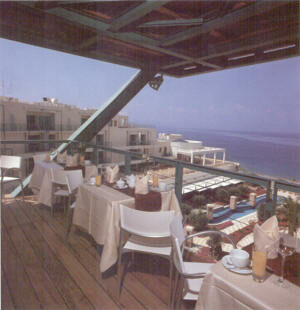European Weightlifting Championships 2003
 Loutraki is one of the most important spas in Greece. The town has been built on an excellent grid plan, which includes wide avenues, squares and a well-known waterfront. Hotel availability is in the vicinity of 5,000 beds-more are offered in private lodgings. A casino used to operate in Loutraki before World War II, but its operation was suspended until a new one opened in 1995.
Loutraki is one of the most important spas in Greece. The town has been built on an excellent grid plan, which includes wide avenues, squares and a well-known waterfront. Hotel availability is in the vicinity of 5,000 beds-more are offered in private lodgings. A casino used to operate in Loutraki before World War II, but its operation was suspended until a new one opened in 1995.
Loutraki is considered Greece’s most ancient bathing resort. The first written reference to the city of Loutraki is in the “Hellenica”, a book by the Athenian historian Xenophon (431-351 bc). He referred to “Thermae” (the ancient name of Loutraki which derived from “Thermia Artemis”, the protector goddess of therapeutic mineral waters), mentioning that the Spartan king Agesilaos camped there during the Corinthian war (395-387 bc). Located in a strategic geographical position (a connecting point between Athens and the Peloponnese), at the foot of Gerania Mountain, the city was first colonized by the Corinthians in 750 bc. There are also historical references that around 146 bc, when the Romans took over the city, General Sulla was cured in its spa waters.
 The therapeutic properties of the waters of Loutraki were also aknowledged in medieval times–possibly even before 1345 ad, when Byzantine Emperor John Cantacuzene built the church of Aghios Andreas, which survives until today. The number of churches built during the Byzantine era proves the importance of the city and its development through the ages. The saline waters of Loutraki (30-31°C) are used both internally (drinking and inhalation) and externally (baths) for curing dyspepsia, arthritis and liver ailments. The bottled water of Loutraki, with a strong presence of magnesium, is considered the best in Greece and can be found under several brand names that all feature the word Loutraki.
The therapeutic properties of the waters of Loutraki were also aknowledged in medieval times–possibly even before 1345 ad, when Byzantine Emperor John Cantacuzene built the church of Aghios Andreas, which survives until today. The number of churches built during the Byzantine era proves the importance of the city and its development through the ages. The saline waters of Loutraki (30-31°C) are used both internally (drinking and inhalation) and externally (baths) for curing dyspepsia, arthritis and liver ailments. The bottled water of Loutraki, with a strong presence of magnesium, is considered the best in Greece and can be found under several brand names that all feature the word Loutraki.
Loutraki was officially characterized as a spa in 1925. The Loutraki- Perachora Municipality was established in 1934. The ancient site of Perachora, with its famous 8th-century bc Heraion, temple of Hera, lies 15 kilometres north of Loutraki, at the tip of the peninsula, with the Lake Vouliagmeni lagoon, another six kilometres out.
 CHECK OUT THE PHOTO GALLERY FOR MORE PICTURES OF LOUTRAKI
CHECK OUT THE PHOTO GALLERY FOR MORE PICTURES OF LOUTRAKI
 MORE INFORMATION ON THE OFFICIAL CITY OF LOUTRAKI WEBSITE
MORE INFORMATION ON THE OFFICIAL CITY OF LOUTRAKI WEBSITE
